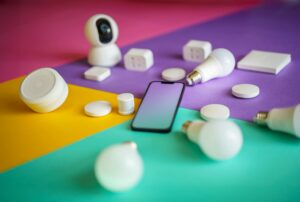Artificial Intelligence has already changed the way we live, work, and create. From writing assistants to image generators and code builders, AI is helping professionals work faster than ever before. Yet, despite the headlines warning of “robots taking over,” there’s one sector that continues to resist automation – the creative world.
In 2025, while AI continues to evolve, there are strong reasons why creative jobs won’t disappear anytime soon. Let’s explore what makes human creativity so hard to replicate – and how you can future-proof your own creative career.
1. Creativity Is Not Just About Output
When people think about creativity, they often imagine the final product – a painting, a script, or a design. But true creativity is much more than that. It’s about curiosity, intuition, and emotional depth. These traits come from lived experiences and human emotions – something algorithms cannot truly understand or replicate.
AI can remix ideas, but it can’t originate them in the way humans do. It lacks the emotional and cultural context that makes art, writing, or storytelling meaningful. As a result, the creative process itself remains uniquely human.
2. Emotion and Empathy Drive Human Connection
One of the biggest limitations of AI is its inability to feel. Whether it’s a novelist evoking heartbreak or a marketer crafting a message that inspires hope, creativity relies heavily on emotion.
Even the most advanced AI models can analyze sentiment but not experience it. That’s why creative professionals – writers, designers, musicians, filmmakers – still play an essential role in shaping culture. Art isn’t just communication; it’s a reflection of shared human emotion. Without empathy, the work might look impressive, but it rarely moves people.
3. The Value of Imperfection
AI-generated art and text often appear technically flawless, but that perfection is precisely what makes it less human. The best creative works – a raw song, a sketch, a heartfelt essay – often connect because of their imperfections. They show vulnerability and authenticity.
In a world saturated with algorithmic precision, human-made imperfection becomes a mark of authenticity. It’s what audiences crave: the sense that there’s a real person behind the words or the image. As AI tools become more common, that human touch will become even more valuable.
4. Originality Requires Perspective, Not Patterns
AI is built on data. It learns from what already exists. That means it’s excellent at identifying patterns but terrible at breaking them. Humans, on the other hand, create breakthroughs precisely by going against the norm.
Think of artists like Picasso or writers like Virginia Woolf – their genius came from seeing the world differently, not repeating what came before. AI cannot imagine the “new” outside of its training data. Until it develops true independent thinking (which remains theoretical), originality will stay human territory.
5. Creative Jobs Are Evolving, Not Disappearing
AI doesn’t replace creativity – it amplifies it. In 2025, we’re witnessing a shift toward AI-assisted creativity, where tools help creators ideate, test, and execute faster. Musicians use AI for mastering tracks, designers for quick mockups, and writers for brainstorming outlines. But the final vision still depends on the human behind the tool.
In fact, creative professionals who learn to collaborate with AI are finding new opportunities. The demand for “human + machine” synergy is growing across marketing, media, entertainment, and education.
6. Culture Demands Human Context
Culture is constantly changing – shaped by politics, humor, slang, and shared experiences. AI can only understand these elements in hindsight, after they’ve been recorded in data. But creativity often comes from predicting or shaping culture, not following it.
That’s why advertisers, screenwriters, journalists, and content creators still matter: they interpret social signals and create narratives that resonate now. Until AI can live, laugh, and argue with humans, it will always miss the pulse of real life.
7. Ethics, Storytelling, and Meaning Still Require Humans
Even if AI could mimic creativity perfectly, there’s another question: should it? Creativity is tied to human values, ethics, and moral choices. Art can provoke, heal, or challenge. It raises questions about identity, society, and purpose – things that go beyond computation.
Only humans can decide what stories need to be told, what symbols have meaning, and what values art should represent. AI might assist, but it can’t assign significance. In that sense, creativity will always be a moral, not mechanical, act.
8. The Future Is “Human-Centric Creativity”
So, what’s next for creative professionals? The key lies in embracing human-centric creativity – using AI as a tool while emphasizing the things machines can’t do: storytelling, intuition, empathy, and ethics.
Writers will use AI to accelerate drafts, but the voice and tone must remain human. Designers will rely on AI for quick ideas but add their signature style. Marketers will analyze data with AI but craft campaigns that speak to real emotions. It’s not man vs. machine – it’s man with machine.
How to Stay Relevant as a Creative Professional
- Learn to use AI tools: Treat them like creative assistants, not replacements.
- Develop your personal brand: Authenticity is your competitive edge.
- Double down on emotional intelligence: The best creators understand people, not just data.
- Keep experimenting: Creativity thrives on curiosity and risk-taking.
- Focus on storytelling: The most enduring skill in every creativ


